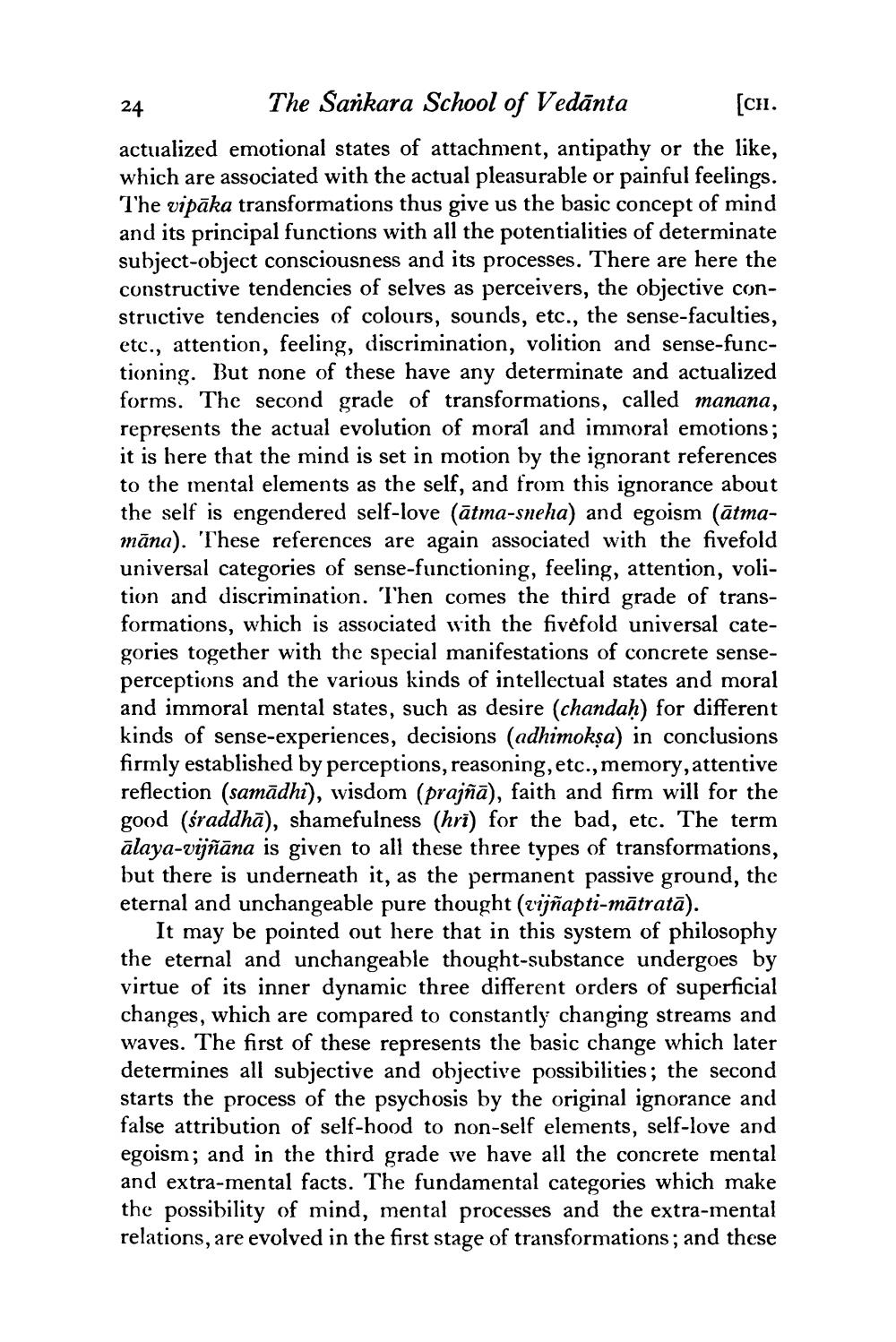________________
The Sankara School of Vedanta
[CH.
actualized emotional states of attachment, antipathy or the like, which are associated with the actual pleasurable or painful feelings. The vipaka transformations thus give us the basic concept of mind and its principal functions with all the potentialities of determinate subject-object consciousness and its processes. There are here the constructive tendencies of selves as perceivers, the objective constructive tendencies of colours, sounds, etc., the sense-faculties, etc., attention, feeling, discrimination, volition and sense-functioning. But none of these have any determinate and actualized forms. The second grade of transformations, called manana, represents the actual evolution of moral and immoral emotions; it is here that the mind is set in motion by the ignorant references to the mental elements as the self, and from this ignorance about the self is engendered self-love (ātma-sneha) and egoism (ātmamāna). These references are again associated with the fivefold universal categories of sense-functioning, feeling, attention, volition and discrimination. Then comes the third grade of transformations, which is associated with the fivefold universal categories together with the special manifestations of concrete senseperceptions and the various kinds of intellectual states and moral and immoral mental states, such as desire (chandaḥ) for different kinds of sense-experiences, decisions (adhimokṣa) in conclusions firmly established by perceptions, reasoning, etc., memory, attentive reflection (samādhi), wisdom (prajñā), faith and firm will for the good (śraddha), shamefulness (hri) for the bad, etc. The term ālaya-vijñāna is given to all these three types of transformations, but there is underneath it, as the permanent passive ground, the eternal and unchangeable pure thought (vijñapti-mātratā).
It may be pointed out here that in this system of philosophy the eternal and unchangeable thought-substance undergoes by virtue of its inner dynamic three different orders of superficial changes, which are compared to constantly changing streams and waves. The first of these represents the basic change which later determines all subjective and objective possibilities; the second starts the process of the psychosis by the original ignorance and false attribution of self-hood to non-self elements, self-love and egoism; and in the third grade we have all the concrete mental and extra-mental facts. The fundamental categories which make the possibility of mind, mental processes and the extra-mental relations, are evolved in the first stage of transformations; and these
24




